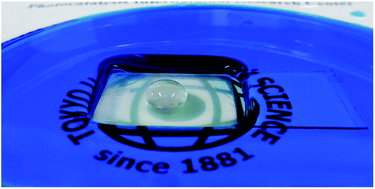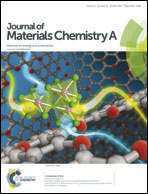Development of sol–gel processed semi-transparent and self-cleaning superhydrophobic coatings†
Abstract
Optically transparent, mechanically durable, and self-cleaning superhydrophobic coatings are greatly awaited for applications in daily life. An attempt has been made to develop sol–gel processed semi-transparent, durable and self-cleaning superhydrophobic coatings on glass using a silica–PMMA composite. A water drop acquires a near spherical shape on the coating exhibiting a water contact angle of ∼159° and immediately rolled off under small disturbance. A 10 μl water drop could individually collect around 10 mg of dirt particles along the way whilst rolling off the coating surface. The superhydrophobicity of the coatings remained intact under the impact of a water jet. A water jet hits the superhydrophobic coating and was repelled straightaway off the surface, without leaving any trace of water. These coatings showed both strong superhydrophobicity and superoleophilicity. We observed an improvement in mechanical stability, as well as optical transparency of the coatings in the visible range after low loadings of PMMA polymer (2 vol%) in silica. The prepared coatings maintained excellent superhydrophobicity even after 6 months storage under normal conditions in air.


 Please wait while we load your content...
Please wait while we load your content...